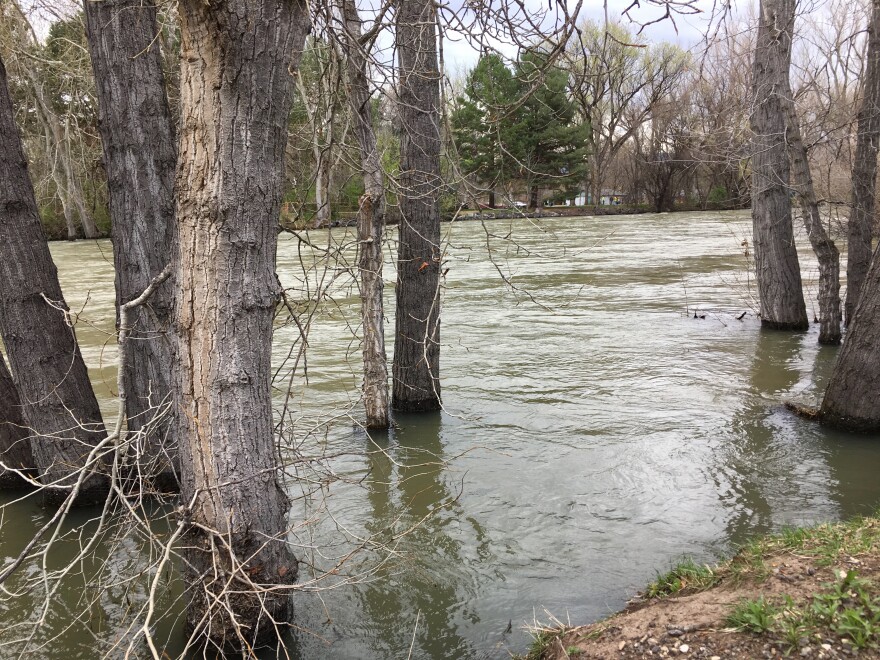The U.S. Army Corps of Engineers will release even more water from Lucky Peak Dam next week, up to 8,500 cubic feet per second (cfs) by Wednesday. Flood stage is considered to be 7,000 cfs, and was reached a month ago. Before they do that, a team led by engineers from the federal agency in Washington will help put up a levee to protect parts of Ada County near Eagle Island.
The 4-foot-tall barrier is the latest effort to hold back rising water levels in the Boise River. Ada County requested help from the Walla Walla Corps of Engineers after declaring a flood emergency. County spokesperson Kate McGwire says the team will help build a temporary levee this weekend between the river and some privately owned gravel pits.
“They’ve got wire casing around the sides and the wire cages are lined with a tarp-like material and then they’re filled with sand," says McGwire. "So they’re extremely heavy. And they’re linked together like a puzzle piece. And it’s 4,300 feet long and it should only take three to four days to construct.”
But with rain in the forecast, construction of the levee could get complicated. The county does not have to pay for the construction of the barrier, but will have to pay for its removal once the flooding danger is in the rearview.
McGwire says the number one priority is residents’ safety, and that people who live in the area should have an evacuation plan ready. She says the county encourages people in the flood zone to apply for flood insurance now, even though it takes 30 days to go into effect. According to the Associated Press, applications for flood insurance in the region have already spiked.
“We’ve got a lot of weeks, a lot of days and unfortunately a couple more months of this high water activity so it’s better to get it now than not to get it at all.”
The county is also trying to protect the access road to Boise’s wastewater treatment plant. According to city spokesperson Mike Journee, the river would have to double in size from its current measurement to endanger the plant itself. Journee says the city is taking precautions by plugging up manholes in low lying areas to keep water from flowing into the sewer system – flood water that would eventually end up at the treatment plant.
Find reporter Frankie Barnhill on Twitter @FABarnhill
Copyright 2017 Boise State Public Radio



